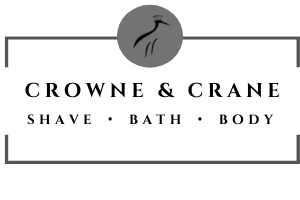Posted by Karl on Jul 31st 2016
Frequently Asked Questions
- Q: What is the best way to make a lather with shaving soap?
- A: There is no one "best" way to make shaving lather. However, the two most common methods to create a great shaving lather are called bowl lathering and face lathering. Here are the steps.
- Prepare the brush. If you are using a natural hair shaving brush such as a badger, boar or horse hair brush, then allow the bristles of the brush to soak in warm water for a minute or two prior to creating your lather. For synthetic brushes this step is optional, but you should still thoroughly wet the brush prior to use.
- Load the brush. Take the brush and shake most of the water out of it over the sink. leaving the brush damp rather than dripping wet. If you are using a shaving cream, simply put an almond sized dollop of shaving cream on the end of the bristles. If you are using a hard shaving soap or a "croap" (soap that is soft, but not as soft as a cream) then make circular motions on the soap using light to medium pressure on the brush for about 15 to 30 seconds. If you sense that the soap is getting a pasty feeling, wet your fingers in water and allow a few drops to fall on the tips of the bristles and resume loading the brush. At the end of this process, there should be sufficient soap loaded into the bristles for a 3 pass shave. At this stage, the soap in the brush has reached a stage called "proto-lather."
- Create the shaving lather. Now that we have a good amount proto-lather in the bush, we are ready to create the final shaving lather. You can choose to perform this final step in a shaving bowl, mug or scuttle, in which case we call this "bowl lathering" or we can build the lather directly on the face, in which case it is called "face lathering." In either case, this involves moving the brush in a vigorous circular motion, pausing from time to time to drizzle a few drops of water onto the brush until the lather has a rich and creamy texture, with a consistency similar to whipped cream or yogurt, depending on your preference. At this point there should be no large bubbles left in the lather and the lather will have a smooth and uniform appearance. The lather should be very moist, smooth and have a shiny appearance when light strikes it
- Lather your face. We are now ready to lather for shaving. The lather should first be applied to the face with circular strokes. If you were face lathering, you've already been doing this. This ensures that the whiskers are coated on all sides by the lather and are fully conditioned and softened. In this final step, we will use paint brush strokes to apply an even coat of lather to all of the areas that we intend to shave. We're ready to go. Just repeat this last step for each pass. Don't be tempted to shave areas where the lather has been removed. Some shaving soaps have very little residual slickness and razor burn can result from this practice. Remember, that getting the best results from a wet shave is the result of gradual beard reduction, not rapid beard removal. Use no to very light pressure on the razor and shave first with the grain, relather and shave across the grain, relather and shave against the grain to get an enjoyable and comfortable shave that will leave your face as smooth as a baby's backside.
Q: How do I apply beard oil?
A: It's a fairly simple process. The important thing is not over do it. It's probably best to start with the less is more approach. Place a few drops of beard oil onto your fingers and then rub your hands together. Next, run your fingers around in your beard in all directions, making sure that all sides of each hair comes into contact with the oil. After you've worked the oil into your beard, comb or brush your beard. For the first few minutes, your beard will feel slightly oily, but after about ten or fifteen minutes your hair will absorb the oil and the oily feeling should be gone. Afterwards, your beard should feel softer, more manageable, look much better and have a lustrous sheen for the rest of the day.
Q: Are all Crowne & Crane products phthalate free?
A. Yes they are.
Q: What if I have skin allergies?
A. Some people have skin allergies and skin sensitivities to any of a wide variety of fragrance and essential oils. For those with skin allergies or sensitivities to fragrances, we offer an unscented version of our shaving soap that contains no fragrance, essential oils or perfumes whatsoever.

